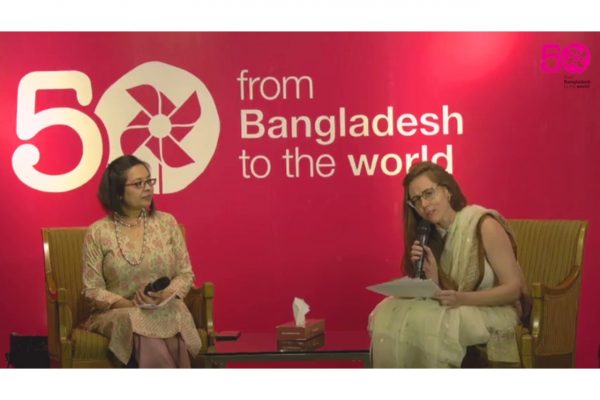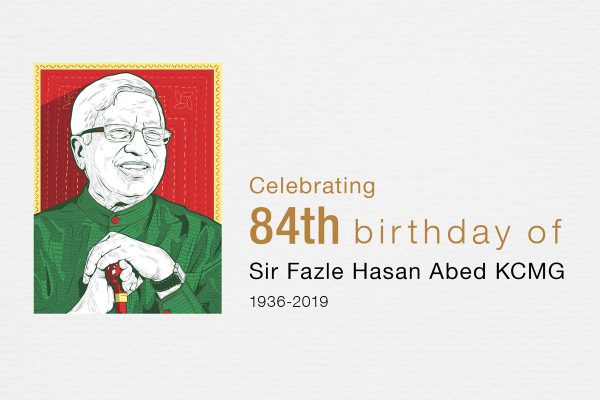Want to create innovations that work? Get out and listen.
Reading Time: 4 minutes
On July 22, David Lewis wrote a blog post on “Is Innovation Essential for Development Work?” Maria May, from BRAC’s Social Innovation Lab, reflects on where development practitioners should start.Last week I visited a few families that have taken microfinance loans from BRAC in Sri Lanka.
On July 22, David Lewis wrote a blog post on “Is Innovation Essential for Development Work?” Maria May, from BRAC’s Social Innovation Lab, reflects on where development practitioners should start.Last week I visited a few families that have taken microfinance loans from BRAC in Sri Lanka. One woman had used a loan to start a business making black tamarind paste, an essential ingredient of many tasty Sri Lankan dishes. When walking into her yard, I noticed that there were CDs hanging on strings from many of the trees. Later I saw that one tree had coconuts attached to it. What’s that for? I asked. She explained that the branches grow longer (and therefore bear more fruit) if they are held down. Coconuts are a cheap weight. Brilliantly simple! What about the cds? What are they for? The women looked at me for a minute and then laughed. Those are just decorations.
At its core, innovation is a survival skill. It emerges as a response to extreme situations to produce a better option than what was previously imagined and practiced. For those whom “making ends meet” remains a daily struggle, innovation is not a choice, or a trendy new concept, but a matter of necessity. Yet implicitly, many development organizations operate under the assumption that they know better than poor people. After all, ignorance is a driver and consequence of poverty. Nonetheless, everyone is an expert on their own life and has the greatest incentive to care about her own well being. In “innovating,” we often ignore this when designing new products or programs. How many times do we read an article about a new innovation that will change the world? Yet when it gets to the hands of the final intended users, it’s often re-purposed. Malaria nets used for fishing or better yet, wedding veils. The truth is, often the poor are more creative and much more practical than those of us tasked with innovation. Consequently, they are also better judges of what will work in the complex environments in which they operate.
While perhaps with a bit of excessive fanfare, it’s wonderful to see such celebration of innovation in development. BRAC offers many examples of how an organization can create an internal sense of urgency about solving a problem in a constrained environment. One of my favourite examples was the realization that we could make it affordable to send vaccines to rural facilities if we made our cold packs out of banana peels, which can be found in abundance locally.
We live in a world of finite resources and a lot of people; clearly ways to make what we have go farther are desperately needed. But to do this in a meaningful timeframe, there’s a need to re-conceive where disruptive innovations will come from and how we nurture them. First, we must start learning from and listening to world experts on innovation. I would respectfully say that the perspectives of those in the bostees are as important as those emanating from the hallowed halls of Harvard or comfortable offices of Seattle. As a start: check out Behind the Beautiful Forevers by Katherine Boo, which offers an in-depth account essentially from residents of a Mumbai slum. Bringing these voices to the fray will enable a deeper understanding of the situation, which is a messy tangle of things that can be construed as “problems,” “assets,” “constraints,” “opportunities,” depending on how one looks at them. Slums in a city like Dhaka are a perfect example of the importance of vantage point: to the causal eye tracing the houses built out of cardboard and plastic, often on poles sticking out of filthy water, their residents are victims to be pitied. Sympathy rises to an all-time high in the midst of an eviction, like the one in Korail in April. Yet to many, the slums represent opportunities and a chance to rise. After the eviction, one resident said, “Thank God we have the opportunity to stay in this place. My children’s education, our livelihoods and a shot at a better future all depend on it.” We have to orient ourselves to this perspective—what does she want? What does she have? What does she need and why doesn’t she have it? Experts can help, but only once practitioners start pulling on the right threads instead of imposing an outsiders’ understanding. Doug Saunders captures this danger in Arrival City, with a particularly poignant example from Kibera slum in Kenya, where residents are watching new housing projects get built without any expectation of living in them. Either they will be unaffordable, or if they are granted on some sort of merit system at subsidized prices, they’ll be rented back out for a profit by the supposed resident.
Listening is the first step to finding ways to bringing the resources available for poverty alleviation to bear in a way that’s effective and sustainable. Better yet is engaging a broad constituency in the creative process. This doesn’t make taking a “solution” to a village for testing, but rather working together on solutions. Rarely can a solution be parachuted in, particularly as the final effects will be seen in how the users interact with the “innovation.” Often the innovation comes from within; in a remote corner of Domar, in Northwest Bangladesh, we have a small project called adorso (model) ward helping community groups to hold NGOs (including us!) and local politicians accountable by putting data in their hands and helping them create. Now, without any guidance from BRAC, they are building bridges using community resources, and convincing the local government to let them plant trees on the government land bordering the roads using a profit-sharing model. I had to suppress a smile as a woman briskly showed me around her village to see newly installed water pumps. The hardware was critical, but it was the palpable energy and sense of ownership that she, and others that I met, that lay behind all the visible changes.







